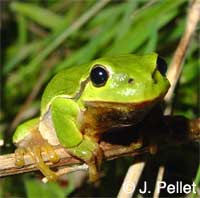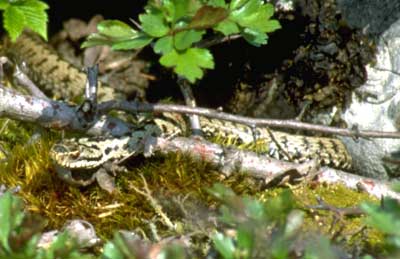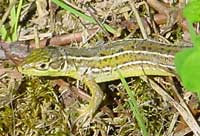
Research interests
My research interests are focused on conservation biology, especially using molecular techniques. My research area comprises phylogeny and phylogeography, population genetics, reproductive behaviour, inbreeding and inbreeding depression, population dynamics and invasive species. For the moment, I have focused my research particularly on reptiles due to the lack of such analyses in this taxa and the high trashold of this group. Moreover, it allows to study several aspects that are more complicated with mammals or birds.

Phylogeography and refugial area in Europe
During my PhD, I have studied the phylogeography of three European vipers, the asp viper (Vipera aspis), the common adder (V. berus) and the nose-horned viper (V. ammodytes). The results showed a stronger genetic diversity than previously supposed, especially in V. ammodytes. The occurrence of numerous refugia used by this species during the last glaciations in Balkans peninsula is considerable and confirmed the necessity of more phylogeographical studies in this region. The adder showed an unsuspected clade in Italy and a huge genetic variability in the northern clade due to the use of several small refugia located North of the Alps during the last glaciation. The asp viper displayed a more common pattern (Spain and Italian refugia), but the occurrence of a small southern France refugia was demonstrated. Indeed, most of the reptiles are ideal taxon to understand complex recolonisation patterns due to the low colonisation rate, their ability to survive in small refugia and the hibernation capacity.

Population genetics and its implication on the conservation
The understanding of the genetic structure between and within populations is a major concern for the conservation biology. Indeed, the inbreeding or inbreeding drift in small populations can only be compensated by migrations between different demes. By using molecular markers such as microsatellites, the migration can be evaluated and signs of genetic diversity decrease detected. Moreover, inbreeding or genetic diversity are often related fitness parameters (such as survival, neonate survival or fecundity), but only a limited number of study have compared those parameters in the field.

Reproductive strategy
Fitness of all animals is directly related to their survival and their reproductive success. By the lack of parental care and the absence of social bonds between mating couples, snakes are ideal model for studdying parameters that are involved in the reproductive success. For example, in the adder, a direct relationship between the length of the male and his reproductive success was observed. Moreover, multiple paternity frequently occurs in this species and the reason of such behaviour by the female must still be studied.
Alien species
Only a minority of introduced (voluntary or not) species can settle and a minuscule part of them became invaders. These species, however, have a huge impact on the native community and induce the reduction of numerous species. Consequently, their impact on native communities is a major concern for conservation biology.

Reptiles
Unfortunately, this taxa is the less studied vertebrate due to the low level of interaction with human. However, reptiles are optimal models for research on reproductive strategy, phylogeography and conservation biology. Indeed, most of the European species are threatened by environment destruction, particularly because reptiles live in particular environment and need small field structure. All these reasons have conducted my research to be focused on this group.